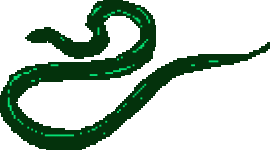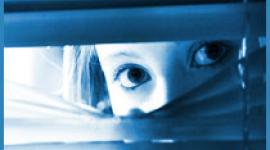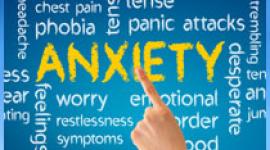Panic Attacks and Menopause
 The letter raised some interesting issues. Issues we have been researching for a number of years. This article is written in response to a letter querying the difference between panic attacks and menopause.
The letter raised some interesting issues. Issues we have been researching for a number of years. This article is written in response to a letter querying the difference between panic attacks and menopause.
Firstly, the issue of the role that hormones play in anxiety and panic. From what we have seen over the last ten years, there is no doubt that a large group of women across all age groups experience an increase in anxiety and/or panic either in conjunction with PMS, pre menopausal or during menopause.
Besides noting that pre-menopausal clients experience their worst symptoms while in bed at night, the article describes a number of sensations such as sudden tingling surges, adrenaline rushes, skin irritation and itching like 'worms under the skin'.
As the article states, this last symptom is rarely mentioned in the literature of panic disorder, but can be a very common one during pre-menopause.
Our research over the last six years is showing that this, and other 'symptoms' not detailed in the literature, are experienced not only in pre, or menopausal women, but from across all age groups by both male and female. Our research and our ongoing contact with large numbers of clients shows a definite pattern to this type of attack which can vary considerably to the symptoms categorised in the literature. Yet these sensations appear to be the 'core' of the spontaneous panic attack.
Our second study of these particular symptoms conducted in 1994 surveyed 72 people with an Anxiety Disorder, 36 with Panic Disorder and 36 with other Anxiety Disorders. (1)
Besides a list of the most common symptoms experienced such as racing heart beat, breathing difficulties etc, participants were asked to indicate if they experienced other sensations prior to, during or after their panic attack.
A condensed summary of the sensations and client answers is as follows:
| Sensations Moving through the Body | Panic Disorder Participants | Other Anxiety Disorder Participants |
| Unusual intense energy | 69% | 9% |
| Rushes of energy | 47% | 12% |
| Electric current | 67% | 5.6% |
| Hot prickly sensation | 50% | 11% |
| Intense heat or burning pain | 42% | 8.3% |
| Wave-like motion of energy | 50% | 8.3% |
| Vibration | 50% | 5.6% |
| Ice cold sensation | 44% | 11% |
| Tingly sensation | 44% | 42% |
- 71% of panic disorder participants compared to 14% of other anxiety disorder participants found it difficult to relate the above sensations to adrenalin.
- These sensations occurred while going to sleep in 69% of panic disorder participants compared to 22% of other participants
- 86% of panic disorder participants were waken from sleep by these sensations compared to 19% of other anxiety disorder participants.
The study also showed people who experience these sensations as part of their attack scored significantly higher on a 'Dissociative' scale than people with other Anxiety Disorders. This provides a very important link to what is now known about nocturnal attacks. Researchers have found that the nocturnal attack occurs during the transition stage from REM sleep to deep sleep or from deep sleep back to REM sleep. (2) The research shows this attack is not precipitated by dreams or nightmares, but happens during the change of consciousness from one state to another. Similar to the changes in consciousness experienced during dissociative episodes. Recent research, which links dizziness to depersonalisation states: 'it is the magnitude of the change (of consciousness) ..which is significant.' (3)
Our experience with clients over the the last ten years is somewhat different compared to the article's in so far as it appears a large sub-group of women with these sensations, ( including two of our staff members), do not or did not get long term relief from these 'symptoms' with HRT.
In regards to the issue of educational and CBT approaches, there are two distinct factors which come into play. Firstly, people who are experiencing these symptoms do not have the language to describe it. As one sleep study says it is felt as an ' upward surge of an indescribable nature, an electric sort of feeling...' While people will speak of the usual symptoms, racing heart, breathing difficulties, etc., the subjective experience of these sensations and/or the dissociative phenomena is difficult to put into words. Even if people can articulate what is happening to them, many hold back because they are frightened of what the therapist will think, and perhaps do, as a result. Secondly, as our studies show, it is difficult for people who have this type of attack to relate it to an adrenalin response and so it is extremely difficult for people to accept this explanation. Combined with this, the various in-vivo components of CBT rarely precipitate the above sensations or those of a dissociative episode.
Our Panic Anxiety Management Programs/Workshops are run by facilitators who have had the Disorder. We have been describing these sensations, and the Dissociative phenomena, in detail during the education component of our Programs and Workshops for over six years. We teach people how they are Dissociating and how these sensations appear to arise as a result of the Dissociation. Once people have an understanding of these sensations, and of the dissociative symptoms, Cognitive techniques are extremely effective. This has been demonstrated in the Evaluation of our Workshops conducted during our recent Project for the Commonwealth Dept of Human Services and Health.
We realise our research is viewed as being controversial, but from a subjective point of view it describes the experience of the many of people with spontaneous panic attacks. While hormonal factors can complicate the Attacks and/or the Disorder, the Dissociative component and the above sensations are playing a much greater role in Panic Disorder than is currently recognised.
Sources:
Arthur-Jones J & Fox B, 1994 , 'Cross Cultural Comparisons of Panic Disorder'.
Uhde TW, 1994, 'Principles and Practice of Sleep Medicine', 2nd edn, ch 84 WB Saunders & Co
Fewtrell WD & O'Connor KP,' Dizziness & Depersonalisation', Adv Behav Res Ther, vol 10 pp201-18
Oswald I, 1962, 'Sleeping & Waking: Physiology & Psychology', Elsevier Publishing Company, Amsterdam
next: Panic Attacks at Traffic Lights
~ all articles on insights into anxiety
~ anxiety-panic library articles
~ all anxiety disorders articles
APA Reference
Gluck, S.
(2008, October 2). Panic Attacks and Menopause, HealthyPlace. Retrieved
on 2025, December 15 from https://www.healthyplace.com/anxiety-panic/articles/panic-attacks-and-menopause



